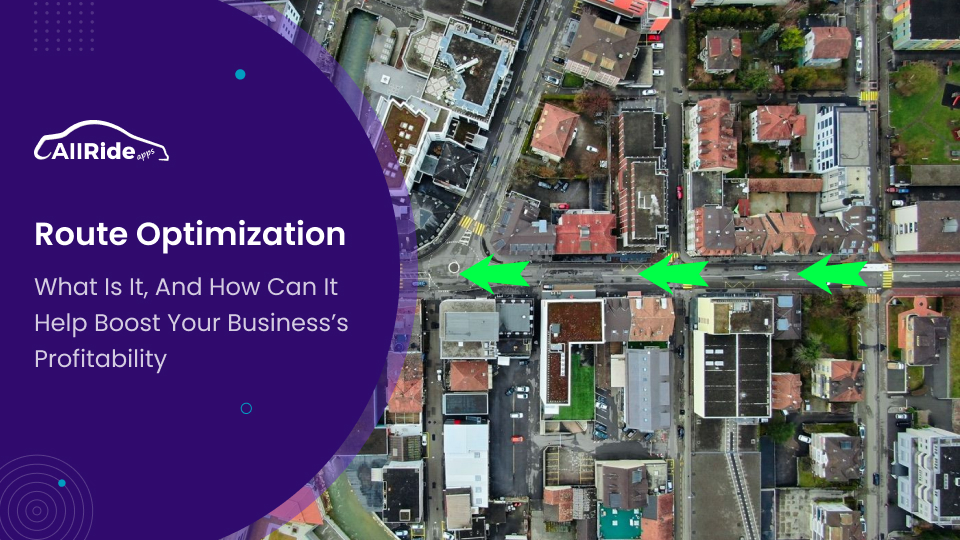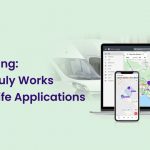
What is Route Optimization? How to Do it
For commercial fleets, finding dispatch routes manually is quickly becoming obsolete as it is time-consuming and inefficient. Many fleet owners and operators have shifted to web-based navigation systems that point directions and route mapping systems that schedule routes for multiple deliveries.
However, as helpful as these systems can be, they have limitations. Navigation systems fail to find the most efficient routes when there is increased demand or if there are multiple stops in a day. Keeping track of even a small fleet can become overwhelming without a way to track how the fleet handles deliveries.
In the following post, we take a look at one of the emerging technologies, i.e., route optimization, that will help fleet operators plan and execute efficient delivery schedules and save on expenses.
What is Route Optimization?
As the name suggests, route optimization refers to the process of finding optimal delivery routes to help fleets make quick and cost-effective trips. In terms of fleet management, it goes beyond the scope of finding the shortest routes between touchpoints. When operating a fleet, route optimization must achieve comprehensive goals beyond setting up individual routes.
Powered by artificial intelligence, route optimization machine learning software tests multiple scenarios considering real-life scenarios to determine the best routes between two or more touchpoints. Route optimization focuses on minimizing the total driving time so the business can save on time and fuel expenses. It factors in variables like –
- 1. Delivery time windows
- 2. Order capacity
- 3. Driver schedule
- 4. Traffic congestion
- 5. Accidents
- 6. Distance between multiple stops
Who is Route Optimization For?
As part of a fleet management solution, route optimization can significantly benefit any organization operating a fleet that has to make multiple stops in a day. Some of them include:
-
Last-mile delivery service
Route optimization can help last-mile delivery businesses visualize the most efficient delivery routes, allowing them to achieve a higher first attempt delivery success rate. Clubbing orders in the same zone in a single delivery route will also help the company save money on fuel, thus boosting profitability.
-
Cab and taxi fleet
A rather innovative implementation of route optimization is in the cab and taxi businesses, where it can be used to improve the state of web-based navigation systems and suggest the most efficient routes considering real-life constraints. Customers can reach their destinations quicker while avoiding closed roads, accidents, and so on.
-
Logistics businesses
AI-based route optimization helps logistics companies improve fleet productivity and mitigate industry challenges by enabling drivers to make logical decisions backed by accurate data. The software will suggest the most cost-efficient route and prioritize routes closest to the delivery operators. Drivers can deliver shipments timely without backtracking from any job, improving customer satisfaction as well.
Determining the Optimal Route: How Does Route Optimization Work?
The traveling salesman problem
By definition, route optimization involves finding optimal routes between two or more touchpoints. But that might leave you wondering, “what is the optimal route, and how is it calculated?”
Route optimization is best illustrated using the Traveling Salesman Problem (TSP), an essential question in operations research and theoretical computer science. Given a set of cities and distances between them, TSP involves finding the shortest, most efficient route so that a salesperson can visit each city once and only once and return to the starting town.
AI-based route optimization software tests multiple what-if scenarios to devise exact or heuristic algorithms that calculate the cost and time of traversing a route and suggest the most efficient one.
But a human route planner can do that, too, right?
Limits of manual route planning
The need for an AI-based route optimization algorithm primarily comes from the sheer number of possibilities when planning multiple route options. While capable enough to juggle multiple priorities, a human route planner will encounter problems calculating multi-stop routes.
For instance, a fleet of one vehicle making ten stops in a day can complete the delivery in a whopping 3,628,800 ways. With 50 destinations, the number of possible routes goes up to 1075, which is more than the estimated number of stars in the universe (~1024).
Of course, this is theoretical, and the pragmatic number will not be as high as that, but it is still a lot. When done manually, planning can take hours, costing the company workforce and wasting time. When that starts to hamper customer service, it is time to consider route optimization solutions.
How Route Optimization Benefits Commercial Fleets
For commercial fleets, planning optimal routes with the help of AI brings several considerable benefits. Some of them include:
-
Manage increasing consumer demands.
Nowadays, delivery businesses must complete deliveries within tighter delivery windows and provide instant feedback and solutions on any variance. With location intelligence, companies can increase the accuracy of last-mile delivery, provide precise predicted arrival times, and improve customer communication.
-
Diversify delivery options
Customers demand quicker and more affordable delivery options and will often select a delivery business offering diverse options. With route optimization, delivery businesses can balance customer demands and offer cost-effective delivery options to home, work, etc., while improving package visibility.
-
Plan multi-stop delivery routes
As the fleet grows in size and the consumer demand increases, planning delivery routes manually becomes a strenuous task. You might have to plan multiple deliveries in a single day and prioritize routes depending on driver availability. Route optimization software helps your business find the most efficient routes and achieve more with each trip.
-
Boost fleet cost-effectiveness
Planning optimal routes directly translates to less time on the road, reducing fuel and fleet maintenance costs. Route optimization considers important factors like load capacity and time windows, which reduces the risk of unnecessary operational costs, high fuel expenses, etc.
Conclusion
Many businesses start small with free navigation systems for planning and dispatching routes. But as you begin to scale your business amidst challenges, finding optimal routes is not a luxury but a necessity. If you are spending multiple hours planning and dispatching routes and are concerned about ever-increasing fuel and driver wages, it is time for your business to implement route optimization and save on time and money.




